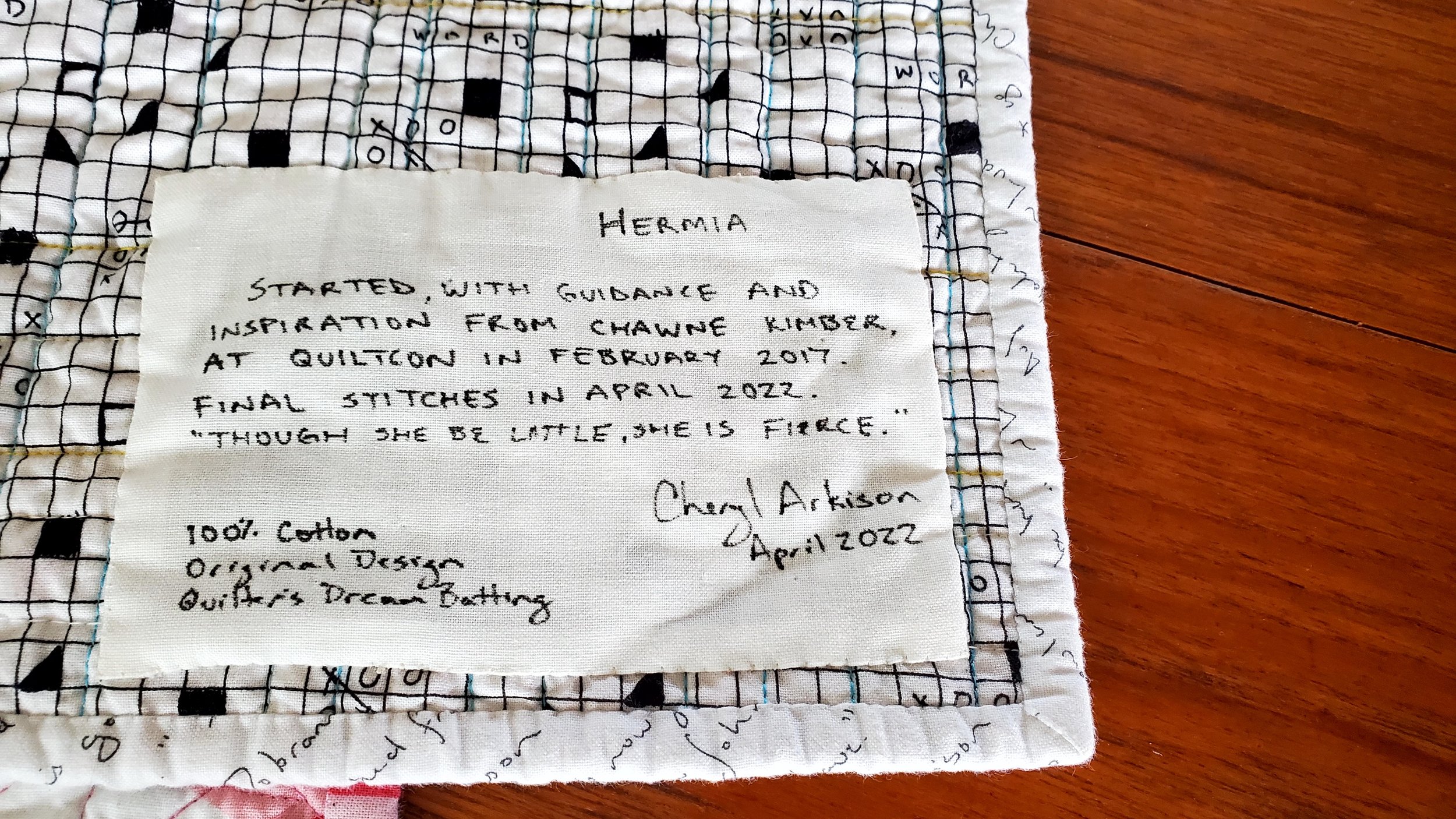Did you know that you are absolutely allowed, even encouraged, to change your mind while making a quilt? Far too often folks think that because they started down a certain path in the quilt making process they are not allowed to veer from it. This isn’t school and standardized testing. Or, as my husband likes to say when the children complain about him changing his mind: I’m an adult and I can do whatever the eff I want!
Definitely applicable to quilting.
These blocks started as class samples. I use them in my Scraptastic class as one option for when you are playing with scrap strips. I make one in a class, put it with the others and move on with life. I had zero plans for the blocks, they served as a teaching tool.
Last month I was teaching a virtual workshop with the Thompkins County Quilters’ Guild out of New York. I had a pile of these blocks on my cutting table and starting arranging them to show possibilities. Quite quickly I was struck by a certain layout of 8 blocks. I don’t think I even had 8 blocks at the time, but I could see potential.
After the class, I finished up those 8 blocks and quickly sewed them together. Smitten, I decided to make more blocks. A lot more blocks. My initial plan was that top picture there. Every 8 blocks sewn together with them all assembled in an alternating layout. In my mind it was perfect.
Not so much on the design wall. My seemingly brilliant idea looked a hot mess.
When I am lecturing and teaching about using scraps one of my big messages is about finding order. When people complain that scrap quilts look messy it is often because they do, because they are lacking order. You can find that order with colour selection, playing with value, or through shape. My blocks are multicoloured, improvised, and made without regard to the value placement of the fabrics. That meant that shape matters the most.
Now my initial blocks - an improv variation on the Prairie Braid - are all trimmed to the same size. That helps. I thought the block layout made with 8 blocks would be totally fine in repeat. As you can see in that top photo, I was wrong. Even with the repetition of the original block shape/size and the repetition of making the larger square block, it still looks messy.
Here’s the thing, nothing was sewn together or set in stone. Even if it was, I would have taken it apart. If it’s not working, it’s not working. If you subbed salt for sugar in your cake would you still eat it? If you installed a bathtub too small for the space you framed, would you just live with it? No matter what, you aren’t tied to finish something that isn’t working.
So I tried something different. I played around and realized the second layout was much stronger, way less messy. Better yet, it used the exact same amount of blocks that I had planned to make!
That is, until I changed my mind again.









